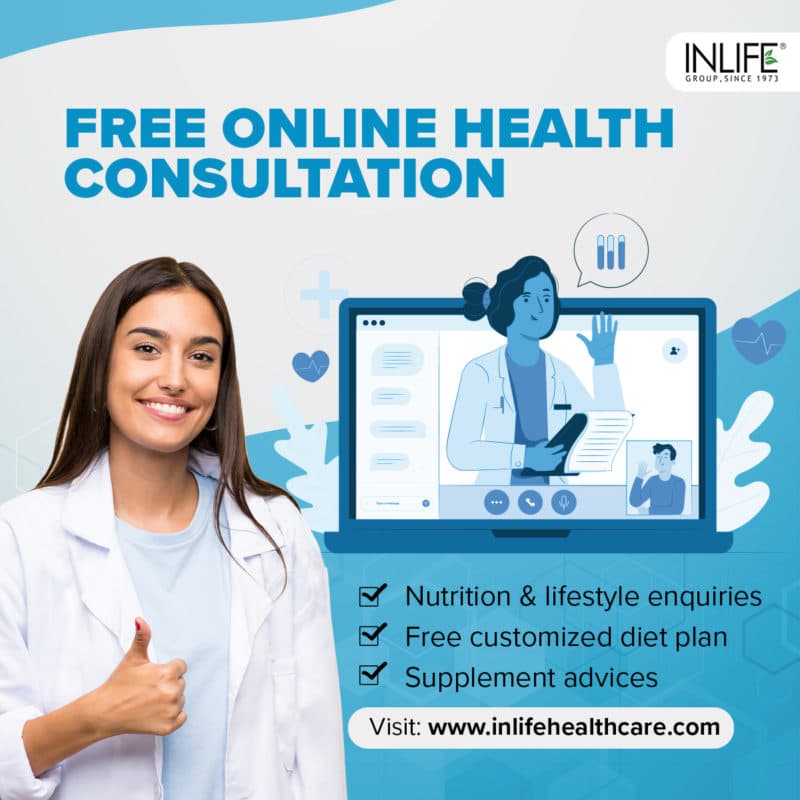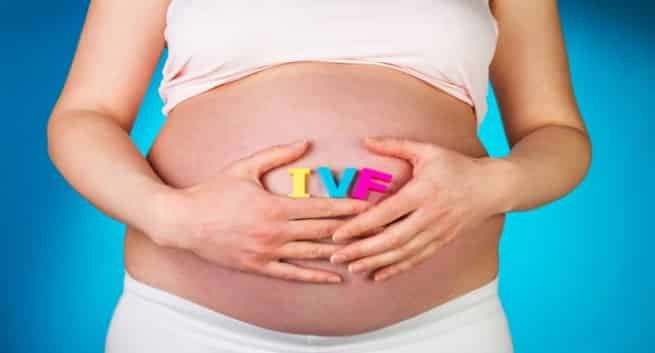Women's Health
5 Important Facts You Need To Know If You Are Considering IVF
Have you ever wondered about IVF? By 2016, some 6.5 million babies had been born utilizing in-vitro fertilization (IVF).
According to the Centers for Disease Control and Prevention (CDC), around 1.6 per cent of infants born each year are conceived through assisted reproductive technology (ART).
For further information about IVF you can see below continuation.


What Is Infertility?
Infertility is condition of the reproductive system, when a couple cannot conceive despite having unprotected sex. Some women get pregnant quickly, but for others it can take longer. It affects approximately 10-15% of couples throughout the world.What Are The Causes Of Infertility?
Making a baby (getting pregnant) is complex. The number of things has to go right for both the man and the woman. Therefore, there are several causes of infertility in women and men.A Woman’s Fertility Can Be Affected By:
Ovulation
This is the procedure by which the egg travels from the woman’s ovary to meet the sperm and pregnancy begins. Some women don’t ovulate every month, which makes it harder to become pregnant.Issues With Your Reproductive System
This might involve a blockage, cancerous or noncancerous growths, enlarged ovaries, scarring and an abnormal opening of the cervix.Disease And Disorders
This might involve endometriosis (when uterine tissue grows outside the uterus) and polycystic ovary syndrome (PCOS) (enlarged ovaries containing fluid-filled sacs).Age
As a woman gets older, it becomes harder to get pregnant.Weight
Being overweight or underweight can affect fertility. Even too much or too few exercises that can affect a woman’s chances of getting pregnant.Diseases
Unrestrained diabetes, autoimmune diseases (when your body attacks itself), lupus, and also celiac disease can make it hard for a woman to become pregnant.A Man’s Fertility Can Be Affected By:
Detrimental Or Poorly Functioning Sperm
This would consider a look at the quality of the man’s sperm. It also would consider how well and how fastly the sperm proceed as it travels to meet the egg.Infection
This can be in the configuration of a bacterial infection inside the man’s testicles or an infection caused by sexually transmitted disease (STD).Retrograde Ejaculation
This is the procedure by which a man’s sperm goes into his bladder rather than outside the penis as it is supposed to do.Overheating The Testicles
This can happen by wearing underwear or pants that are too tight, hot tub use for extended.What Are The Treatments For Infertility?
There are few treatments for infertility they are- IUI
- IVF
- Stimulating ovulation with fertility drugs
- Foods to include and exclude.
IUI:
IUI is also called as Intrauterine insemination, during IUI treatment the healthy sperm are stored instantly in the uterus around the time the woman’s ovary releases one or more eggs to be fertilized. Depending on the causes for infertility, the timing of IUI can be organized with your normal cycle or with fertility medications.What Is IVF?
IVF, or in vitro fertilization, is the procedure of fertilizing an egg with sperm in a laboratory, and inserting it within a woman’s uterus as an embryo. Many couples find themselves struggling to get pregnant “the old fashioned way,” but these stunning advances in medical science are now able to give hope to those suffering infertility. It does not work for everyone, however. Generally the success of IVF depends upon which particular fertility problems you or your partner (or both of you) are experiencing, what age you are, and your overall health. Read on to understand more of the benefits and risks that in vitro fertilization can offer.Stimulating Ovulation With Fertility Drugs:
Fertility medications/drugs are the primary treatments for women who are infertile due to ovulation disorders. These medications regulate or induce ovulation. Talk with your doctor about fertility drug options — including the benefits and risks of each type.Foods To Include:
- Brussels Sprouts
- Pumpkin Seeds
- Sweet Potatoes
- Apples
- Oysters
- Blueberries
- Avocados
- Nuts
- Eggs
- Black-Eyed Peas
- Olive Oil
- Leafy Greens (Spinach, Chard And Kale).
Foods To Exclude:
- Strawberries
- Peppers
- Grapes
- Seafood
- Processed foods
- Caffeine
- Soy products.
What Is The IVF Treatment Procedure? And How Does IVF Work? In Vitro Fertilization Process Step By Step.
Few techniques may vary depending on the clinic, but procedure of ivf pregnancy usually involves the following steps:1. Suppressing The Natural Menstrual Cycle
The woman takes a drug, usually in the form of a daily injection for about 2 weeks, to suppress their natural menstrual cycle.2. Super Ovulation
Fertility drugs consisting of the fertility hormone follicle stimulating hormone (FSH) are given to the woman. FSH makes the ovaries produce more eggs than usual. Vaginal ultrasound scans can monitor the proceedings in the ovaries.3. Retrieving The Eggs
The eggs are collected through a minor surgical procedure known as follicular aspiration. A very thin needle is inserted through the vagina and into an ovary. The needle is attached to a suction device. This sucks the eggs out. This process is repeated for each ovary. In the year 2011, researchers suggested that collecting 15 eggs from the ovaries in one cycle gives the highest chance of a successful pregnancy. Frozen or donated eggs can also be utilized.4. Insemination And Fertilization
The eggs that have been collected are stored together with male sperm and retain in an environmentally managed chamber. After a few hours, the sperm should enter the egg. Occasionally the sperm is straightly injected into the egg. This is called an intracytoplasmic sperm injection (ICSI). Frozen sperm, retrieved through testicular biopsy, may be utilized. This is supposed to be as effective as fresh sperm in reaching a successful pregnancy. The fertilized egg splits and becomes an embryo. At this point, few centres offer pre-implantation genetic diagnosis (PGD) which can screen an embryo for genetic diseases. This is somewhat controversial and is not always utilized. One or two of the best fetus are selected for transfer. The woman is then given progesterone or human chorionic gonadotrophin (hCG) to aid the lining of the womb receive the embryo.5. Embryo Transfer
Sometimes, more than one embryo is inserted in the womb. It is essential that the doctor and the couple wishing to have a child discuss how many embryos should be transferred. Generally, a doctor will only transfer more than one embryo if no ideal embryos are available. The conveying of the embryo is done utilizing a thin tube, or catheter. It invades the womb through the vagina. When the embryo sticks to the lining of the womb, healthy embryo extension can start.Essential Facts About In-Vitro Fertilization (IVF)
- In-vitro fertilization (IVF) can aid achieve pregnancy when other treatments have not worked.
- The procedure involves fertilizing an egg outside the body and implanting it to continue the pregnancy.
- There is a higher chance of multiple births with IVF.
- In IVF by PGD procedure gender baby segregation can be done.
What Is The Success Rate For IVF?
The outcomes of IVF vary dramatically, depending on each couple’s causes for infertility and their ages. Younger women generally have healthier eggs and also higher success rates. Based on some data, the percentage of IVF cycles resulting in a live birth (in which one or more babies are born) is about:- 40% for women age 34 and under
- 31% for women age 35 to 37
- 21% for women age 38 to 40
- 11% for women age 41 to 42
- 5% for women age 43 and over.
What Are The IVF Treatment Process Side Effects?
Changes in Mood
IVF medicines incite your ovaries to create multiple eggs, thereby improving your possibilities of getting pregnant every cycle. Though the medication cocktail you take will depend on your particular fertility issues, estrogen is almost always a part of the cocktail. High dosages of estrogen may cause mood swings or depression. You might also feel like you’re just not yourself. The reason for this is mild: hormonal changes especially those due to medications can influence more than just reproduction, and may change how your body and brain interact and process information. The good news is that the mood changes are temporary. If you do various IVF cycles, you may find that you experience fewer mood changes with the second cycle.Anxiety
You already know that infertility can be very anxiety-inducing. IVF can also trigger anxiety, since daily injections and doctor’s appointments regularly redirect your awareness to your fertility efforts. You may feel anxious about the consequences of treatment, or about your ability to get pregnant. You may struggle to wait to take a pregnancy test, or find yourself regularly looking for signs of pregnancy. Some women find that fertility drugs improve their anxiety.Headaches
Some women endure headaches after IVF drug injections, particularly in the hours directly following an injection. If you feel a the headache that is associated with your menstrual cycle, this may mean you are more sensitive to hormonal shifts, and hence more exposed to IVF-induced headaches as well.Hot Flashes
Hormones are the body’s chemical messengers, transmitting signals from one area of the body to another. Differences in hormone levels can alter how your body notices temperature, creating sudden hot flashes. You may also find that you are more sensitive to heat, or that you grow winded more efficiently.Weight Gain
Estrogen can change your metabolism and make you to pack on the pounds. Many women notice that they gain 5-10 pounds throughout an IVF cycle. Complete of this weight is water weight due to improved water retention, but don’t be shocked if you gain some fat, too.Points To Remember
- Proper sleep/rest for the body is very important. A patient should make sure that she gets enough duration of sleep during the night.
- Eating a healthy diet comprising of fresh fruits and vegetables is essential during your IVF treatment period, after the IVF process and throughout your pregnancy.
- Refrain from drinking alcohol, cold drinks and also caffeinated beverages. Stay away from processed foods and also deep fried foods. Strictly No for Junk food. As far as possible try and take home cooked food and abstain from eating food from outside. A diet rich in dairy products is good.
- Directly after your IVF procedure it is advisable to avoid working out. Especially workouts that are strenuous, involve lifting weights and aerobics should be avoided.
- If you have been daily practising yoga, some light yoga poses that do not affect the stomach area can be practised. But do not start yoga at this point if you were not doing it earlier. The first few days after the IVF process until implantation happens, it is better to put your yoga practice on hold.
IVF Pros
- Only a minimum number of fertility drugs are prescribed to produce a limited number of quality eggs – 3 to 5.
- No fertility drugs are directed to stimulate egg fertilization and the patient gives her one quality egg per monthly cycle.
- Provides couples to choose the sex of their child through gender determination of embryos developing in vitro.
- Allows couples to freeze their excess embryos for future Frozen.
IVF Cons
- IVF is really expensive and is not 100 percent triumphant
- It needs the injection of costly fertility medications
- IVF fertility medications cause distress
- IVF fertility medicines cause undesirable side effects
- IVF cycles require infrequent office visits to monitor the patient’s process through ultrasound imaging and blood tests.







